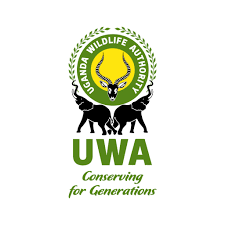
Mountain Gorillas: The Gentle Giants of Africa’s Misty Forests
The mountain gorilla is one of Africa’s most iconic and awe-inspiring species, a creature that symbolizes both the fragility and resilience of the natural world. Living only in the dense forests of East and Central Africa, these gentle giants have captured the imagination of travelers, conservationists, and filmmakers alike. Unlike other wildlife that roam vast savannahs, mountain gorillas thrive in secluded mountain forests, where mist clings to ancient trees and every step into the undergrowth feels like entering a secret world. Meeting them in the wild is widely regarded as one of the greatest wildlife experiences on Earth.
What Are Mountain Gorillas?
Mountain gorillas (Gorilla beringei beringei) are a subspecies of the eastern gorilla and the largest primates living today. They are distinguished by their thick, long fur, which helps them survive in cold, high-altitude climates where temperatures can drop significantly. Adult males, known as silverbacks, weigh up to 200 kilograms (440 pounds) and stand over 1.7 meters tall when upright. Despite their immense strength, mountain gorillas are known for their peaceful and social nature, living in stable family groups led by a dominant silverback. Their diet consists mainly of leaves, shoots, fruit, and occasionally bark, with their daily routines revolving around foraging and resting.
Where Do Mountain Gorillas Live?
Mountain gorillas live exclusively in two regions of Africa:
-
Bwindi Impenetrable National Park in southwestern Uganda, a UNESCO World Heritage Site with steep terrain, ancient forests, and more than half of the global mountain gorilla population.
-
The Virunga Massif, a chain of volcanic mountains shared between Uganda (Mgahinga Gorilla National Park), Rwanda (Volcanoes National Park), and the Democratic Republic of Congo (Virunga National Park).
These habitats are characterized by high altitudes of 2,200 to 4,000 meters, thick vegetation, and cool, misty climates. Because their distribution is so restricted, mountain gorillas are among the rarest animals in the world.
How Many Mountain Gorillas Are Left?
Thanks to intensive conservation efforts, the population of mountain gorillas has been increasing. Once on the brink of extinction, they now number just over 1,000 individuals in the wild. This remarkable recovery is due to the combined efforts of governments, conservation organizations, researchers, and local communities. Gorilla trekking tourism has played a key role in this success, providing essential funds for protection and community development.
Gorilla Trekking: Meeting Mountain Gorillas in the Wild
The most direct way to encounter mountain gorillas is through gorilla trekking, which is offered in Uganda, Rwanda, and the DRC. Treks begin with a briefing at park headquarters before small groups of up to eight visitors set out with guides and trackers. The hike may last anywhere from one to six hours depending on the gorillas’ location, often involving steep climbs and muddy trails through dense jungle.
When the gorilla family is located, visitors are allowed exactly one hour in their company. During this time, travelers may watch mothers nursing infants, juveniles tumbling in playful mischief, and the commanding silverback overseeing his group. The encounter is intimate, raw, and humbling, as the gorillas often go about their daily lives with little concern for human presence.
Why Mountain Gorilla Tourism Is Limited
To protect the gorillas from stress and disease, trekking numbers are strictly controlled. Only a few permits are issued daily, with group sizes limited to eight per family. Visitors must maintain a minimum distance of seven meters, avoid direct contact, and wear masks in some parks to minimize the risk of transmission of human illnesses. Permit fees are high—USD $800 in Uganda, USD $1,500 in Rwanda, and about USD $400 in the DRC—but the funds are vital for conservation and community benefit.
Best Time to See Mountain Gorillas
Trekking is possible year-round, but the dry seasons—June to September and December to February—are the most popular. Trails are drier and easier to navigate, making the hikes less strenuous. The rainy seasons, from March to May and October to November, bring heavier rains, but the advantage is fewer tourists and greener, lusher landscapes.
Conservation Success and Challenges
The mountain gorilla is one of the world’s greatest conservation success stories. Decades ago, their numbers had dwindled alarmingly due to poaching, habitat loss, and conflict. Today, thanks to strict protection, ranger patrols, veterinary programs, and community revenue sharing, populations have stabilized and grown. However, challenges remain, including population pressure around parks, disease risks, and political instability in parts of the DRC. Continued vigilance is required to ensure the long-term survival of these magnificent apes.
Why Seeing Mountain Gorillas Matters
Encountering mountain gorillas in their natural habitat is more than just a safari highlight. It is an emotional experience that connects visitors to the deep bonds shared between humans and gorillas. It is also a direct way of contributing to conservation, as every permit purchased funds the survival of the species and improves the lives of people living alongside gorilla habitats. For many, the trek is transformative, offering not just breathtaking wildlife but also a profound sense of responsibility to protect the natural world.
Mountain gorillas are living treasures of Africa, embodying the beauty, resilience, and vulnerability of the wild. Found only in a handful of remote parks, they represent a rare chance to step into an ancient forest and share space with creatures that mirror our own family bonds. Gorilla trekking to see them is not easy—it requires effort, patience, and investment—but the reward is an encounter that touches the heart and remains etched in memory forever. For travelers seeking the ultimate wildlife experience, meeting mountain gorillas is a journey into the very soul of Africa.




